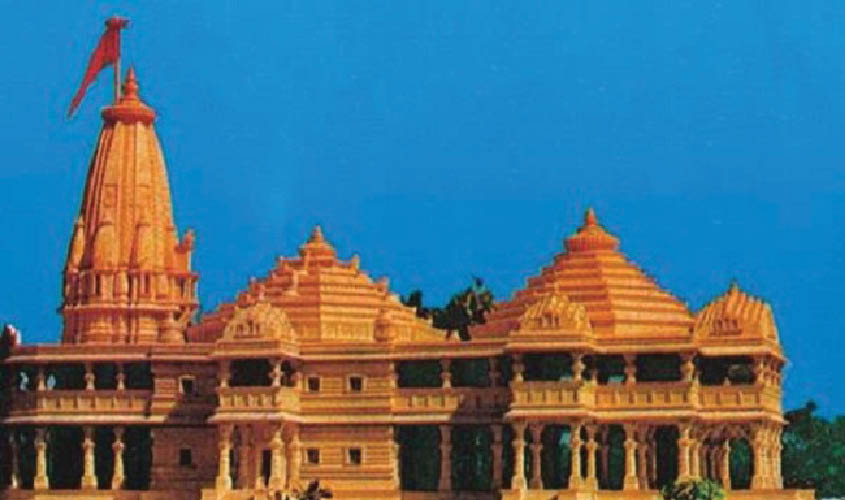It would not intensify communal tensions, but weaken them to sub-critical levels.
Under the leadership of Mahatma Gandhi, strenuous efforts were made on a daily basis since 1919 at persuading the Muslims of undivided India that their future was safe in a country ruled by the Congress Party rather than the Muslim League. Sadly for the millions of victims of Partition, the effort failed. Even in states such as Uttar Pradesh and Bihar that were sure to remain in India rather than form part of the proposed Pakistan, most Muslims opted for Jinnah rather than the Mahatma and his chosen successor, Jawaharlal Nehru. In a move yet to be comprehensively analysed by historians, the Congress leadership quietly accepted Partition rather than hold out for a united country the way the Mahatma had initially demanded. Gandhiji had said that Pakistan would come only over his dead body, but sometime in 1946, this resolve began to diminish, despite the fact that growing unrest in the military made the continuation of British rule unviable. Partition took place amidst horrendous bloodshed and the subsequent elimination of almost all the minority population of West Pakistan and mass murder throughout the decades of the minority population of East Pakistan, a slaughter on its borders to which the Government of India turned a blind eye. The support for separation from the Hindus among all too many Muslims worried Jawaharlal Nehru, who seized on the opportunity offered by the murder of the Mahatma by a Hindu to rapidly put in place his own version of Secularism, a construct in which the majority Hindu community would adopt the role minorities had in other countries, while the minority enjoyed exclusive rights that in other countries were the preserve of the majority community. Thus was born “Nehruvian Secularism”, a policy that bears little resemblance to the secularism enshrined in countries that rigorously separate Church from State. Under Nehruvian Secularism, the Indian Union Muslim League or politicians such as Badruddin Ajmal are “secular”, despite their frank appeal only to a particular community. Any show of religiosity on the part of Hindus is stamped as “communal”, while even the extreme religiosity of Wahhabism is considered kosher. Nehruvian Secularism was carried to its apogee by Sonia Gandhi during the UPA decade, when efforts were even made to claim that Wahhabi terror was a bagatelle when compared to a bogey that Home Ministers Chidambaram and Shinde labelled as “Hindu terror”. It was Sonia Gandhi and the team led by her who were responsible for a sharp electoral reaction within the Hindu community to constantly being on the receiving end of the stick, no matter what the circumstances were, a state of affairs sought by the UPA to get codified in the proposed Communal Violence Bill, in which the only guilty party in any communal incident would—by definition—be Hindu. Both Chidambaram and Shinde must have been delighted when Sonia Gandhi pressed for such a divisive law to be imposed on the country and disappointed at its being abandoned.
Had there been a visitor from outer space, surprise would have been expressed at the fact that 72 years after the country was explicitly partitioned on the basis of religion, the three holiest sites of the Hindu community—the Ram Janmabhumi, the Krishna Janmasthan and the Gyan Vapi spiritual vortex—have not been restored to the millennia-spanning traditions that made them as sacred for the Hindus as the Vatican is for Catholics, Bodh Gaya for the Buddhists and Mecca and Medina for the Muslims. Given that Nehruvian Secularism enjoins Hindus to act in the manner of “dhimmies”, it is no surprise that no government sought to rectify the historical injustice caused when the three holiest sites of a faith with nearly a billion adherents worldwide remains separated from their ancient traditions. If Jawaharlal Nehru had his way, even the Somnath temple would not have been reconstructed during 1950-51. Whether Lord Ram and Sri Krishna be accepted as ancient heroes or as divine figures, they belong to humanity, and to decry as communal suggestions for the return to tradition of their places of birth is to continue the British-era myth that much of the glory of ancient India was myth. In the weaving of a national narrative, the wars enumerated in the Mahabharata need to play as central a part as Homer’s works do in Europe. It is not unreasonable for Hindus to want their three holiest sites to be restored to their traditional roots. The reality is that the longer there is a delay in meeting this natural desire of the majority community, the greater will be the impact of the fringe on the community, and the higher will be the danger of risks to stability.
Not simply in Ayodhya or Mathura, but there is a need for instance to establish for millions of global admirers of the Mahatma among other tour imperatives as a Dandi Path, which completely traces
Unfortunately for the trajectory of events in India over the past century, almost all political leaders saw the more extreme members of the Muslim community as representative of the views of the community as a whole, when the truth is very different. Once the Muslim community understands the importance of the three sites to their Hindu brethren, the overwhelming majority of them will be delighted to return the three sites to their traditional roots, and in substitution build magnificent houses of worship some distance elsewhere. An early restoration of the Ram Janmabhumi, the Krishna Janmasthan and the Gyan Vapi spiritual vortex would not intensify communal tensions in India, but serve to weaken them to sub-critical levels.

